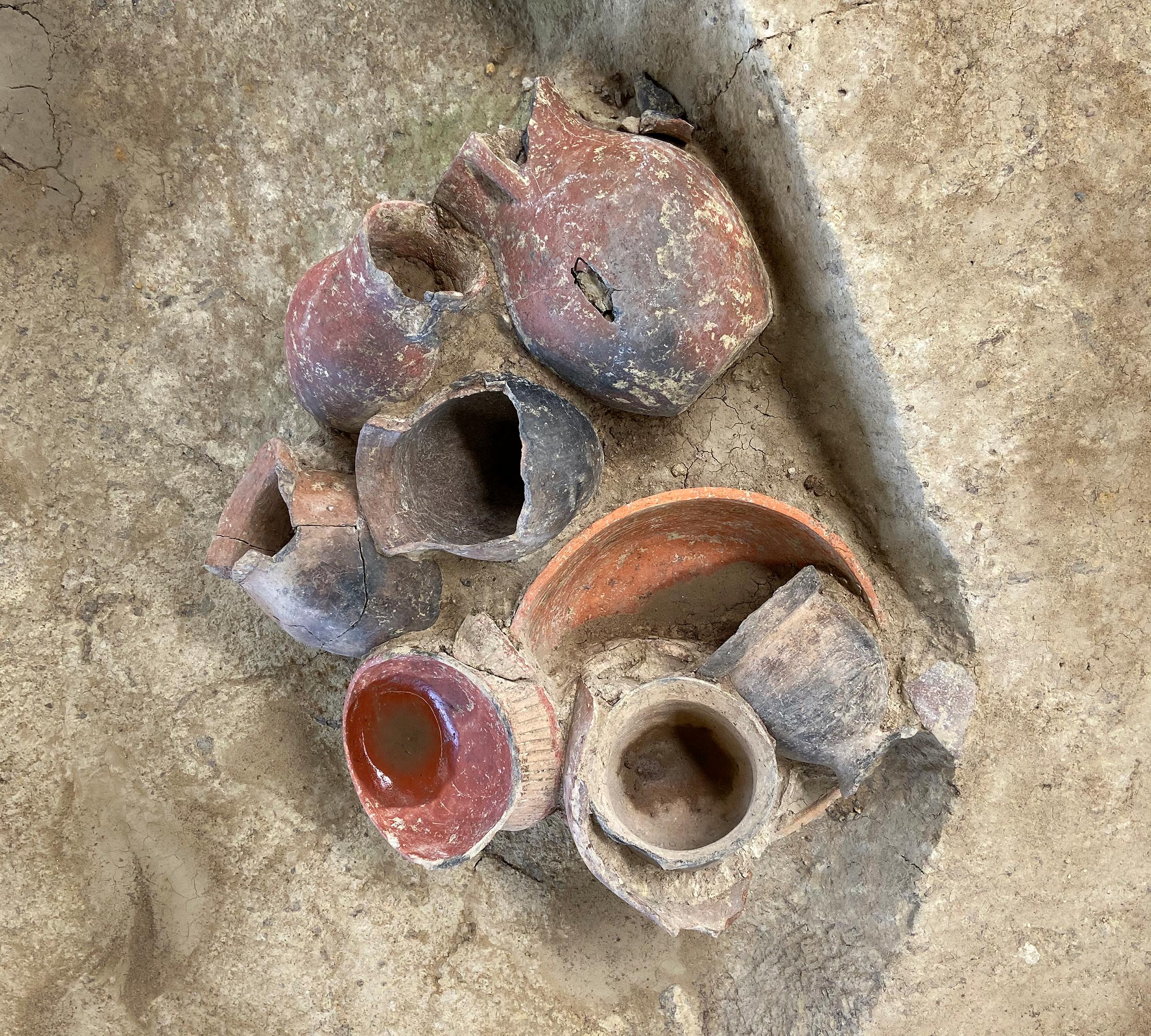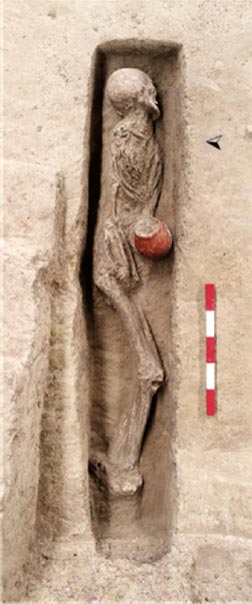HANGZHOU, Sept. 6 (Xinhua) — People in southern China learnt to brew beer from crops and plants about 9,000 years ago, according to findings during an excavation at the Qiaotou site in Yiwu City, known as the world’s supermarket, in east China’s Zhejiang Province. The findings come from work by Chinese archaeologists Leping Jiang and Hanlong Sun, of the Zhejiang Cultural Relics Archaeological Institute in China, who co-authored the study.
The pottery containing beer was found in the base mound along with the human body.

Early evidence of beer drinking was found in an ancient platform mound at the Qiaotou site, as residues of starch, phytolith and fungi were discovered in pottery vessels.
Alcoholic beverages have long been known to perform important sociocultural functions in ancient societies, including ceremonial feasts. A new study found evidence of drinking beer in southern China 9,000 years ago. This was probably part of a ritual in honor of the dead. The findings are based on an analysis of ancient vases found at the bridgehead burial ground, making it one of the oldest beer taverns in the world.
The ancient jar was found on a platform mound (80 mx 50 m wide, 3 m above sea level) surrounded by artificial grooves (10-15 m wide and 1.5-2 m deep). It is based on an ongoing archaeological excavation at the bridge. No housing was found on the premises. The mound had two human skeletons and multiple pottery holes with high quality pottery, many of which were perfect pottery. The pottery was painted with white slips, and some were decorated with abstract designs. As research reports, these relics are probably part of “the earliest known painted pottery in the world.” This type of pottery has not been found anywhere else dating back to this time.

The research team analyzed different types of pottery of different sizes found on the bridge. Some pottery vessels were relatively small and were similar in size to the drinkers used today and those found in other parts of the world. Each of the pots can be held in one hand, basically like a cup, unlike storage containers, which are much larger in size. Seven of the 20 ships that were part of their analysis appeared to be long-necked Hu A pot used to drink alcohol in later historic times.
To confirm that the container was used for drinking, the research team analyzed microfossil residues such as starch, plant fossils (fossilized plant residues), and fungi extracted from the inside of the pot. Residues were compared to control samples obtained from the soil surrounding the vessel.
The team matched the residues from beer fermentation and found microorganisms (starch grains and plant stones) and microorganisms (mold and yeast) in pots that are not naturally found in soil and other man-made objects unless they contain alcohol. Residues have been identified.
“Through a residual analysis of the pots on the bridge, our results reveal that pottery containers were used to hold beer, which is, in the most general sense, a fermented beverage made from rice. bottom(Oryza sp. ), Grains called Job Tears (Coix lacryma-jobi), And an unidentified tuber, “said Jiajing Wang, an assistant professor of anthropology at Dartmouth College. “This ancient beer wouldn’t have been like IPA today. Instead, it was probably a slightly fermented sweet drink, probably cloudy in color.”
The results also showed that rice husks and plant fossils of other plants were also present in the residue from the pots. They may have been added to beer as a fermenting agent.
The Yangtze River Valley in southern China is now known as the country’s rice center, but rice was gradually cultivated 10,000 to 6,000 years ago and still rice 9,000 years ago. It was in the early stages of domestication. At that time, most communities were hunter-gatherers who were primarily dependent on foraging. Given that rice harvesting and processing was labor-intensive, as the researchers explain in the study, Hashito’s beer was probably a ceremonially important drink / beverage.

Residual analysis of the pot also showed traces of mold used in the beer making process. The mold found in the Hashito pot was very similar to the mold found in the jiuqu used to make sake and other fermented rice beverages in East Asia.The result is previous Previous researchIt turns out that mold was used in the fermentation process in China 8000 years ago.
Beer is technically a fermented beverage produced from crops through a two-step conversion process. In the first stage, enzymes convert starch into sugar (saccharification). In the second stage, yeast converts sugar into other states such as alcohol and carbon dioxide (fermentation). As researchers explain in the study, the mold acts like an agent for both processes by acting as a saccharification fermentation starter.
“Fermentation can happen naturally, so I don’t know how people made the mold 9,000 years ago,” says Wang. “If you have rice left over and the grain becomes moldy, you may have noticed that with age the grain becomes sweeter and more alcoholic. Biochemistry associated with musty grains You probably didn’t know, but you probably observed the fermentation process and took advantage of it through trial and error. “
Given that the pottery on the bridge was found near a non-residential burial site, researchers conclude that the beer jar was likely used in ceremonies related to the burial of the dead. .. They speculate that ritual drinking may have been essential for building social relationships and cooperation. And it served as a precursor to the complex rice-growing society that emerged 4,000 years later.
Results of the study have been published in the journal PLOS ONE.
Scientific paper: August 12, 2021, by Jiajing Wang, Leping Jiang, and Hanlong Sun, “Early Evidence of Beer Drinking on a 9000 Years Old Platform Mound in Southern China.” PLOS ONE. https://journals.plos.org/plosone/article?id=10.1371/journal.pone.0255833
Source: September 07, 2021. https://scitechdaily.com/archaeologists-find-evidence-of-beer-drinking-9000-years-ago-in-southern-china/ Archaeologists find evidence of drinking beer 9,000 years ago in southern China Share


Leave a Reply
You must be logged in to post a comment.